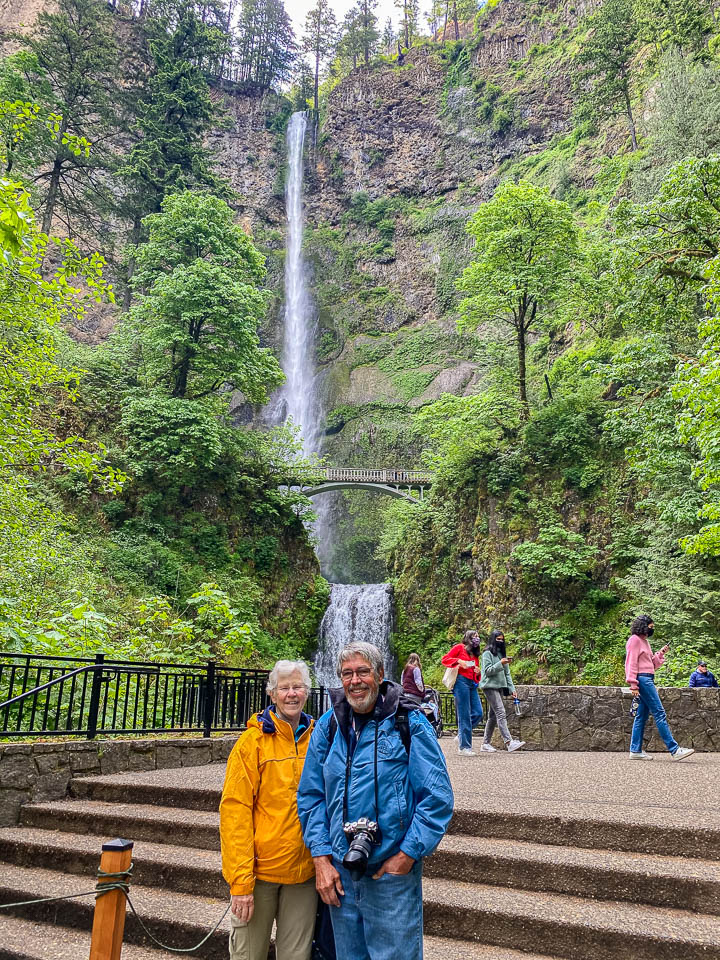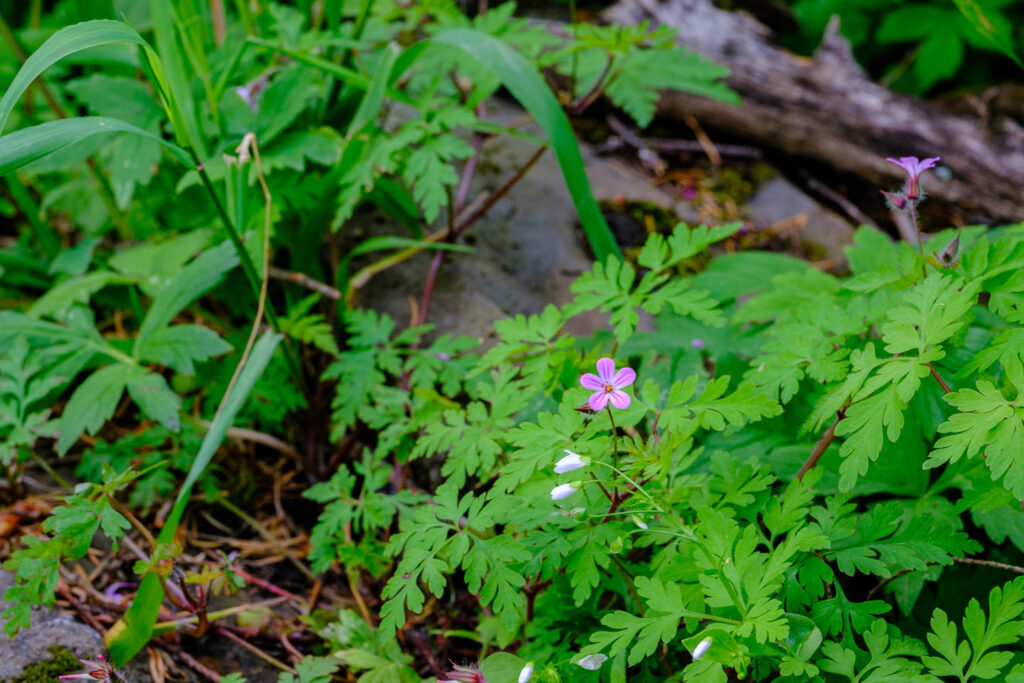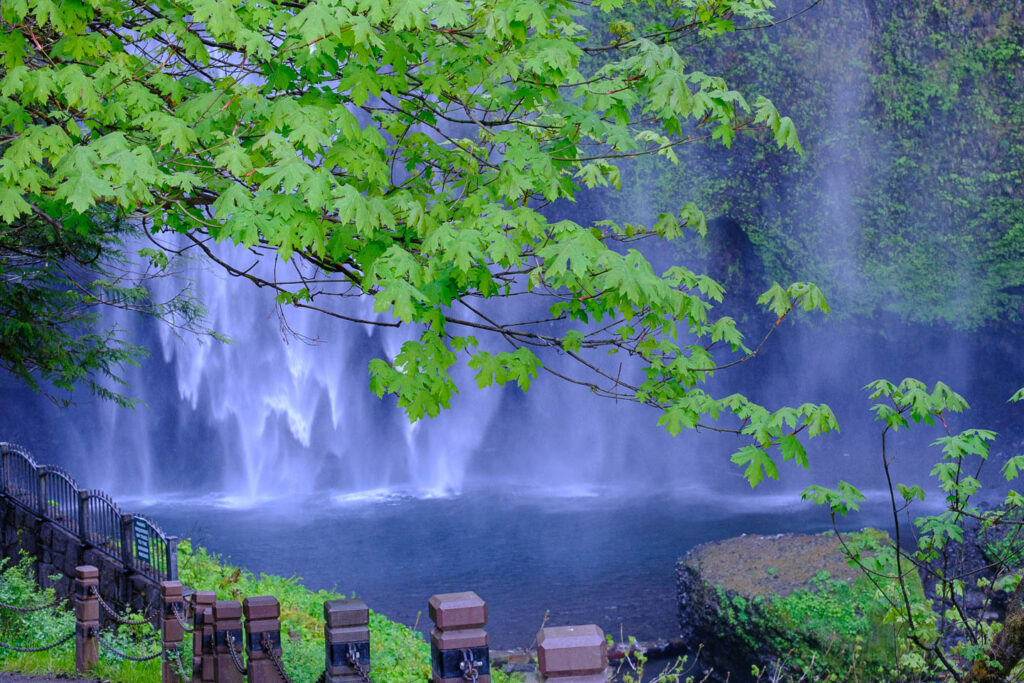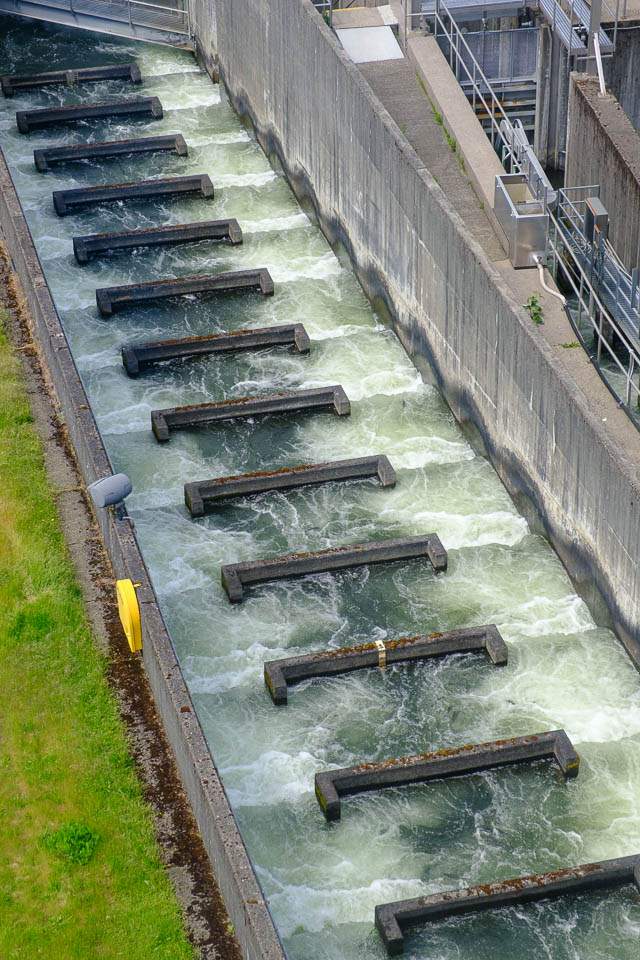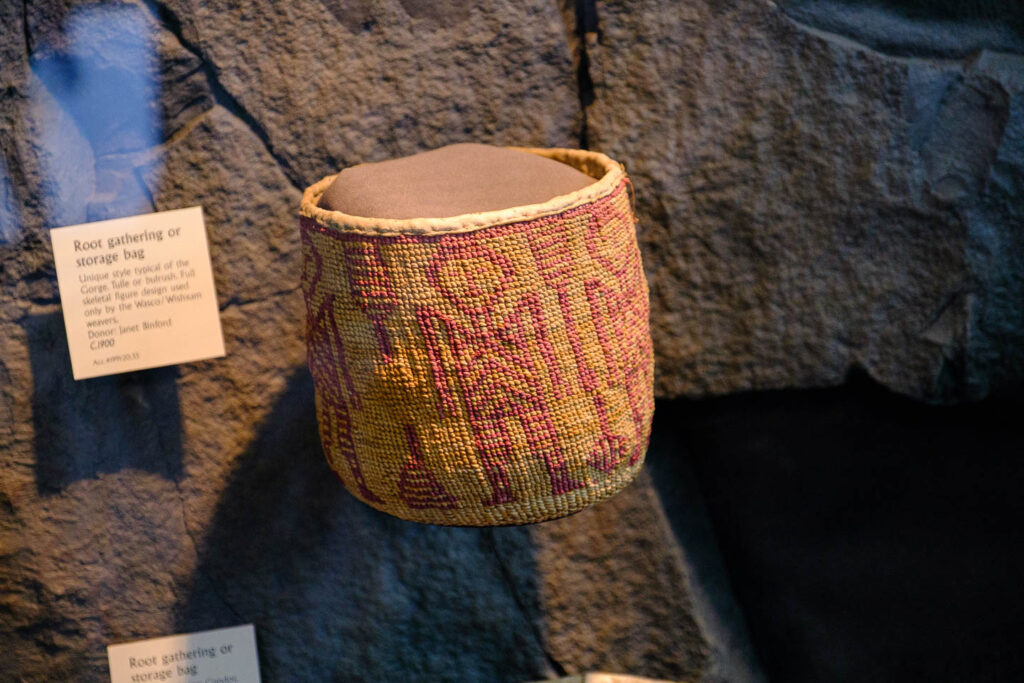A busy day, starting with a 1.25 mile hike up the mountain to the top of Multnomah Falls. It was a brisk morning, temps in the upper 40s to mid 50s but we shed our heavy jackets part way up. It was a nice hike but what they didn’t tell you at the beginning is that the best view is had at the very bottom and it gets progressively scantier the further up you go. In fact, the view from the boat yesterday afternoon as we sailed up the river was probably the best of all. At the top all you have is bragging rights. But actually, the walk through the woods was quite pleasant.
By the way, we determined today that the dead trees we saw from the river yesterday died of the Eagle Creek Fire of 2017, evidence of which we saw today at the falls.
We returned to the ship for lunch (really nice salmon burgers) and then back on the bus for the Bonneville Dam. The original dam and lock system was built in the 1903s as one of FDR’s early recession-recovery projects. It was for a while the largest such dam in the West, eclipsed before too long by Grand Coulee Dam.
It was doubled in size in the 1970s. To do so, an entire town had to be moved to make room for the expanded spillway. The tour consists of two parts: a viewing room overlooking eight enormous generators; the second, a viewing room where fish swimming upstream through the fish ladder can be observed. Don’t go to the bank (or fish market) on my information, but I believe the big fish we saw today were Chinook (King) salmon swimming to spawn. Many of us bemoaned the fact that adult fish die after spawning – after all that work swimming upstream for so many miles. Of course, they probably have no idea what fate holds in store for them when they respond to the call of nature. Many of us don’t, either.
From the Dam we went to the Columbia Gorge Interpretive Center, a very impressive museum and educational facility. It’s a large three-story building that covers events that have shaped the Columbia River Gorge area we’re in now from glacial ages through indigenous peoples, explorers (L&C slept here), fur trappers, Oregon Trail travelers and 20th Century development including of course the dam. Significant space is devoted to Klikatit and other tribes of the area. Their creation god was the Cougar, who created the physical environment and stocked it with food supplies (Garden of Eden?) to sustain the people who came later.
If I have it right, the Columbia Gorge was south of the glacial ice fields, which extended into northern Washington and Montana. But there has been enormous glacial impact from melting ice and snow that unleashed unimaginable floods that sculpted the geography of this area. At one time melting glaciers to the north created a body of water equal in size to Lakes Erie and Ontario combined. Imagine what happened when the ice dams gave way and the water, silt, boulders and ice chunks flowed down to the Pacific Ocean. The flood lasted 1,000 years.
And the trivia nugget of the day: It is illegal to kill a Sasquatch (Big Foot) in Skamania County, Washington where the Interpretive Center is located.
Judy’s at cocktail hour while I type so that I can do the country-and-western singer after dinner.
Dinner’s done (I had Rainbow Trout, Judy veal shank) and have just returned from the evening show. It was a cowboy/country and western guy. He played a mean Gibson guitar, which he doubled up with doing blue grass. A great singing voice and a great sense of humor. A great show. The most memorable lyric was from a love song:
“If my nose ran with money
I’d blow it all on you”
Tomorrow, Hood Mountain







